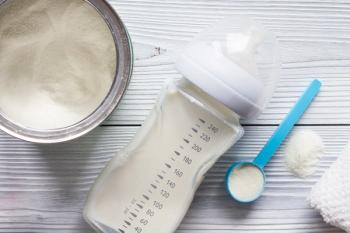
Discussion on “How one child’s tragedy is making us reconsider our approach to drowning prevention”
In response to an article published last year, the AAP wrote a letter to the editor, which has since been refuted.
On June 16, 2021, Contemporary Pediatrics® published an article, “How one child’s tragedy is making us reconsider our approach to drowning prevention.”
Written by Todd R, Porter, MD, MSPH, and Nicole Hughes, the article discussed Hughes’ tragic loss of her 3-year-old son, Levi, who had drowned in a pool in June 2018. After the experience, Hughes found the way children are introduced to water is inadequate, which she discussed in
Porter wrote that the current guidelines from the American Academy of Pediatrics (AAP) encourages parents to listen to their pediatrician when deciding the appropriate time to start swimming lessons. However, Porter also noted that most experts will suggest swimming lessons should begin at the age of 4 years, long after the age at the highest risk of drowning.
Recently, members of the AAP, Shabana Yusuf, MD; Sarah A. Denny, MD; Phyllis Agran, MD; Tracy E. McCallin, MD; Rohit P. Shenoi, MD; and Benjamin Hoffman, MD, et al, responded to some of the points discussed in the article. The AAP considered the article to not properly convey their swim lesson policy.
“The AAP’s most recent policy statement (2019) recommends swim lessons for children 1 to 4 years of age, if developmentally ready,” the AAP committee members wrote. The AAP also stated that the tips they provide are based on reviewed evidence and given a great amount of thought before being published.
The AAP also expressed concern over the reliance on a single skill to prevent drowning. Along with noting the lack of data on how effective lessons on the single self-survival floatation skill are in infants, the AAP said, “While swimming ability may decrease drowning, it does not provide drown-proofing. Any level of swim ability should not lead to belief that a child can be drown-proofed.”
Other concerns brought up by the AAP included: ignoring learning theory, ignoring the potential harm of swim lessons given to infants, and a lack of data clarity.
In a response to this letter, Porter and Hughes discussed and refuted the AAP’s claims. Bringing up evidence from prior AAP policies on drowning prevention, they noted that the AAP often failed to support swimming lessons in children aged under 4 years. While later AAP policies suggested swimming lessons early in life, Porter and Hughes stated that they are not a blanket recommendation as suggested in the Letter to Editor.
In addressing the AAP’s concern over a single skill not being enough to prevent drowning, Porter and Hughes said, “We state that, ‘It is well accepted that drowning prevention involves layers of protection and that enacting all layers achieves the best protection.’ Yet we also highlight that, ‘at least 1 layer of protection is breached in 9 out of 10 fatal pool drowning cases.’”
They discussed other concerns as well, bringing up various points such as: more information being needed to confirm water competency in infants, infant survival swim instructors being well trained, and the table in the original article giving a side-by-side comparison of each program discussed.
To conclude, Porter and Hughes said, “We would argue that one cannot dismiss the experience of a wide swath of parents, swim instructors ,and swim organizations that view these teaching methods as empowering and effective for infants and toddlers.”
Reference
Porter TR, Hughes N. How one child’s tragedy is making us reconsider our approach to drowning prevention. Contemporary PEDS Journal. 2021;38(6).
Newsletter
Access practical, evidence-based guidance to support better care for our youngest patients. Join our email list for the latest clinical updates.








